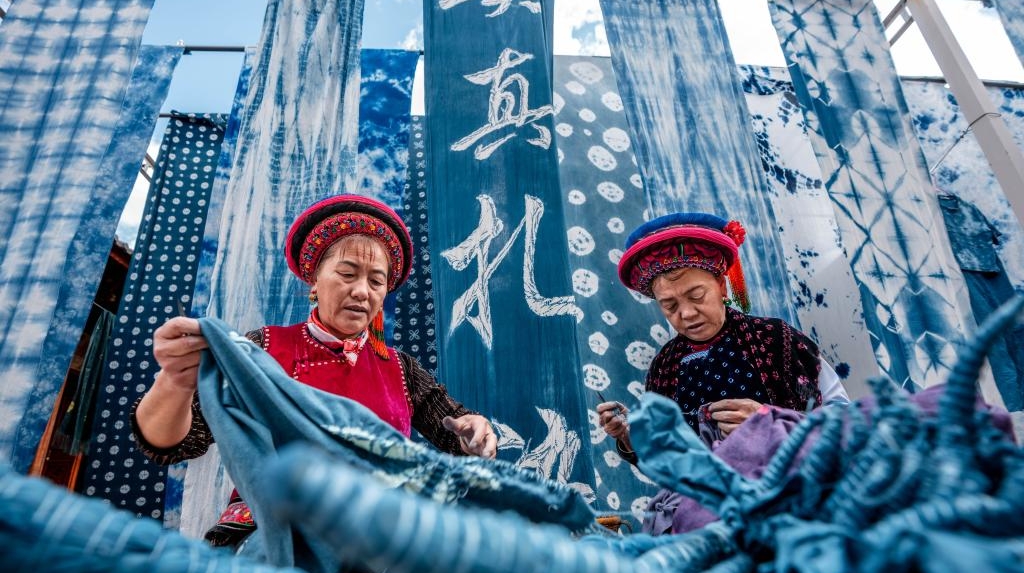白族扎染技艺传承人段银妹(左)和手工艺人段利兰在周城村“璞真染坊”拆花(11月21日摄)。周城,位于大理白族自治州大理市喜洲镇,东临洱海、西枕苍山,是云南省最大的白族自然村,也是著名的“白族扎染之乡”,全村现有扎染经营户200多家,从业人员4000余人。作为大理地区传统手工印染工艺,白族扎染距今已有上千年历史。白族扎染以板蓝根为主要染料,工序包含绘图、制版、印花、扎花、染色、漂洗、拆花、晾晒等。其中,扎花、浸染为核心步骤,手工艺人执针走线,在布料上扎出不同类型的图案,再用植物染料染出蓝底白花、生灵百态。2006年,白族扎染被列入第一批国家级非物质文化遗产名录。[新华社记者 胡超 摄]
Duan Yinmei (L), an inheritor of the tie-dye technique of Bai ethnic group, and handicraftsman Duan Lilan untie knots on fabrics in a dyehouse in Zhoucheng Village of Dali Bai Autonomous Prefecture, southwest China's Yunnan Province, Nov. 21, 2025. Known as the hometown of the tie-dye technique of Bai ethnic group, Zhoucheng Village hosts over 200 households engaging in tie-dye businesses, with the number of employees exceeding 4,000. As a traditional folk technique of the Bai ethnic group, tie-dye boasts a history spanning over a thousand years and was included in the first batch of China's national intangible cultural heritage list in 2006. Tying and dyeing are the core steps in the process of making indigo tie-dye products. Artisans use needles and threads to create various patterns on the fabric, which are then dyed with plant-based dyes, resulting in blue backgrounds adorned with vivid white patterns. (Xinhua/Hu Chao)


 Share:
Share: 





 京公网安备 11010802027341号
京公网安备 11010802027341号